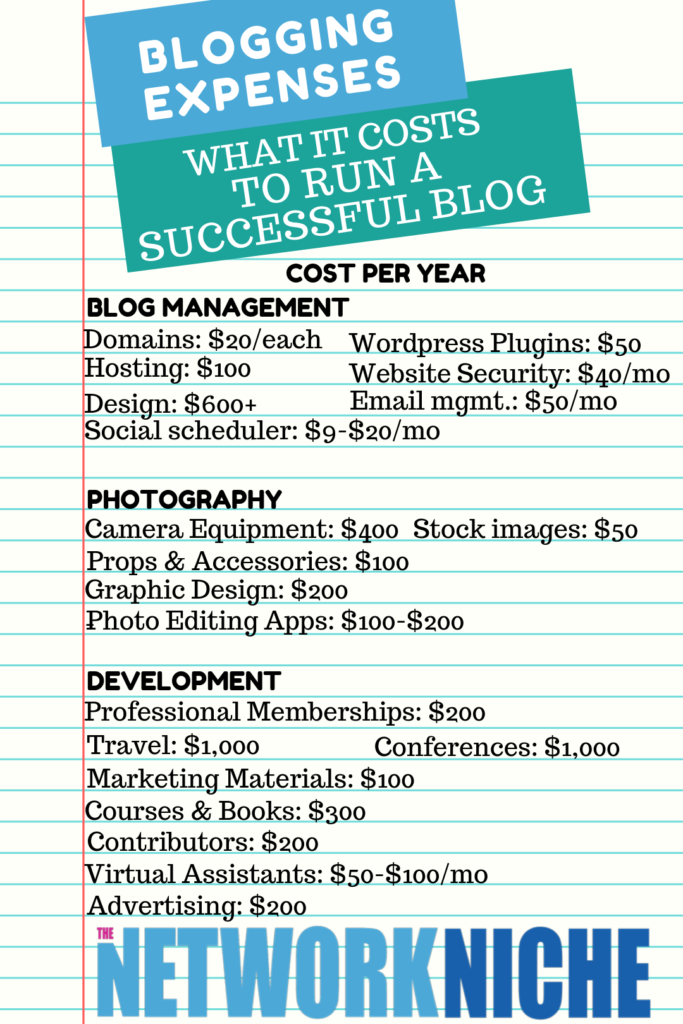It’s typically a transitional time from blogging as a “hobby” to blogging full-time and earning a full-time income. What does it take to become a full-time blogger to maintain consistent income, as well as the energy and support to create online content your audience relies on? We’ll walk you through the 4 S’s of becoming a full-time blogger: savings, streams of income, strategy, and support. Be sure to save this with your blogging buddies who are talking about going from part-time blogger (so they can work from home or homeschool) to full-time blogger (where they’re often the breadwinner in their families).
4 Steps to Take Before Becoming a Full-Time Blogger
1. Establish a healthy savings account
For sponsored posts, bloggers typically receive payment 30-60 days from publication or the end of a campaign. Imagine if you have a financial emergency before that payment, you’ll need to have money saved.
Can you support yourself while your income streams build and eventually payout?
If you have a security breach on your blog and get hacked, do you have enough money saved to cover the cost?
The perfect speaking opportunity lands in your inbox. Travel expenses aren’t covered? Do you have enough money saved to go there and rock the speaking stage?
Full-time bloggers need to consider if they have enough money in their reserves to handle last-minute costs.
While you’re examining your savings and preparing to become a full-time blogger, look for inspiration from six-figure bloggers like Darren Rowse of ProBlogger.com and Pat Flynn from SmartPassiveIncome.com. Both of these men have devoted followings with a track record of earning six-figure incomes.
RELATED POST: The Good, The Bad and The Ugly of Blogger Income Reports
2. Create multiple streams of income
Although sponsored posts and ambassadorships provide financial support for bloggers, they’re not the only ways to generate income. Full-time bloggers create and maintain multiple streams of income. Those income streams include:
- Product sales: Physical products, e-books, digital downloads and more.
- Courses: E-courses and teaching in-person.
- Sponsored Posts: Sponsored brand partnerships for blog posts and social shares.
- Ambassadorships: Short and long-term brand partnerships for blog posts and social shares.
- Advertising and Advertising networks: Pay per click and pay per view ads
- Affiliate income: Earn income for referring products through affiliates like Amazon and ShareASale.
- Community Management: social media management for clients and brands.
- Virtual assisting: Provide administrative support per task, per month, etc.
- Consulting: Provide your expertise to a brand, company or agency.
- Photography & videography: Shoot professional photos and videos.
- YouTube creator: Once you reach 1,000 subscribers on Youtube you can earn income from pre-roll ads and video views.
- Membership content: For a monthly fee, provide exclusive high-quality content to your viewers, who become members.
- Freelance writing: Create quality written content to clients.
- Proofreading & editing: Edit content to make it top-notch.
- Speaking: Share your knowledge with a large audience and get paid for it.
- Events: Produce and host online or in-person events.
- Talent fees: Pay to appear on-camera and in-person on behalf of a brand or agency.
3. Plan to invest and grow your blog
In order to grow professionally and grow your audience, you need to invest in key areas.
Full-time bloggers often have larger expenses including travel, conferences, website security, email management, and as you’ll learn a little later – a supportive team.
Examine key areas where you can maximize investing in your blog for the most return.
What investments can you make NOW to help your journey to becoming a full-time blogger? Is there a course you can take or an event you can attend that will align you with opportunities to get paid as an ambassador or a freelancer?
RELATED TOPIC: What It Really Costs to Run a Blog (Infographic)
 4. Organize support for your blog
4. Organize support for your blog
Although blogging can be viewed as a job where you go it alone and create your own content, many full-time bloggers have a team of support. Your team could include:
- Virtual Assistant
- Graphic Designer
- Professional photographer or videographer
- Contributors
Do you have the income to support outsourcing these duties to others? How will you organize your life to manage to coordinate your support team?
Comment below: Are you a full-time blogger now? Is becoming a full-time blogger your immediate goal? What are your long-terms blogging goals?
Get more blogging and social media tips and articles in your inbox. Subscribe to our newsletter by joining The Network Niche. Our influencer network and blogger outreach agency connects influencers with paid campaigns and event coverage on behalf of major brands.






No Comments